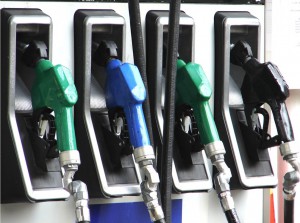
Gas prices have been falling, but a new report shows that the cost of a gallon of a gas may be higher than one expects.
The significant drop in gas prices has plenty of folks fixated on what a gallon of go juice – gasoline or diesel – costs these days. Many wonder when the slide that took prices below $2 a gallon not long ago will end and what it will mean for them and their families.
However, there’s an additional cost when it comes to fueling internal combustion engines, according to the American Lung Association. In a newly released study, the group notes that the average price for a gallon of gas in the U.S. is about $2.23 per gallon, but another $1.30 can be added to each gallon for “health and societal costs.”
The organization’s “The Road to Clean Air” report examined the financial impact of gasoline- and diesel-powered engines in vehicle has on health and climate and what it costs for the 10 states that have adopted California’s zero-emissions standards.
In those states, those costs amounted to an additional $18.42 on an average full tank of gas.
(FCA rolls out custom Jeeps, utes and minivans for SEMA. Click Here for a look.)
The report estimates that in 2015, the harm attributed to passenger vehicles in the 10 ZEV States totaled $37 billion in health and climate costs combined, including $24 billion for health care alone.
It real terms, it amounts to 220,000 work-loss days, more than 109,000 asthma exacerbations, hundreds of thousands of other respiratory health impacts and 2,580 premature deaths, the report says.
The nine other states adopting California’s ZEV rules include: Connecticut, Maine, Maryland, Massachusetts, New Jersey, New York, Oregon, Rhode Island and Vermont.
In October 2013, eight states (California, Connecticut, Maryland, Massachusetts, New York, Oregon, Rhode Island and Vermont) signed a Memorandum of Understanding to ensure successful rollout of state ZEV programs, with the goal of 3.3 million ZEVs on the roads in these states by 2025.
(Chevy screams into SEMA with COPO Camaro, other muscle car concepts. Click Here to check them out.)
These same eight ZEV states signed the International ZEV Alliance agreement at the 2015 Paris climate conference to push for 100% ZEV sales “as fast as possible, and no later than 2050” to help avoid the worst impacts of climate change. Germany, The Netherlands, Norway, Québec and the United Kingdom also signed the agreement.
Hitting the mark in California alone would net a huge savings. If the Golden State shifted entirely to zero-emissions vehicles, the state would save about $7.5 billion a year in health and societal costs, including about $3.8 billion in health costs, $1.5 billion in climate-related damage savings and about $2.3 billion in energy-security cost savings.
As part of those savings, more than 400 premature deaths would be avoided, as would about 29,000 missed work days and more than 9,000 missed school days. All that adds up.
(Hyundai gets it in gear for SEMA. Click Here for the story.)
Under the ZEV Future scenario, where 65% of the vehicles on the road are ZEVs, a conservative estimate of the total health and climate change costs associated with passenger vehicle fleet pollution drops from to $37 billion annually to $15.7 billion by 2050, the report adds. This represents a $21 billion drop in annual costs, even considering the increasing social cost of carbon pollution impacts over time.
